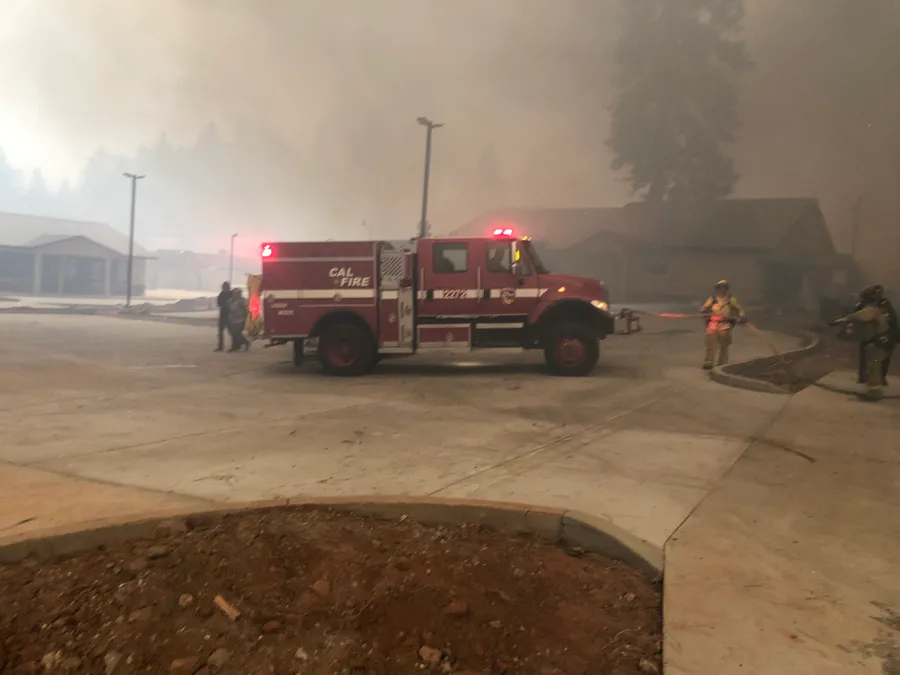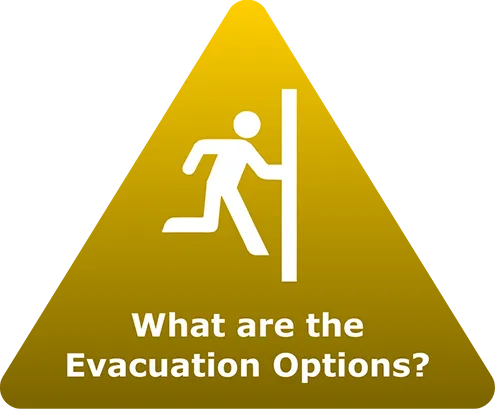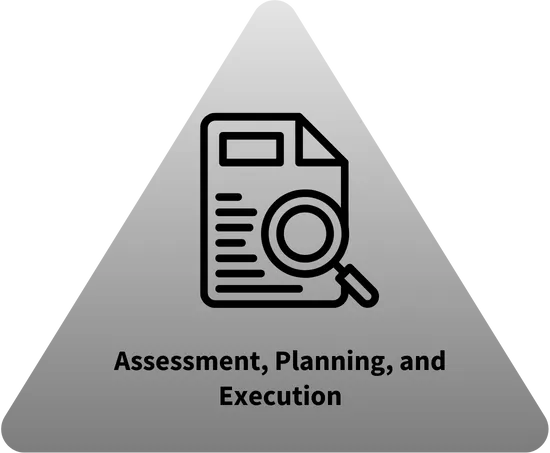
WUI Fire Evacuation and Sheltering Considerations — Assessment Planning and Execution
Defensive actions to protect TRAs

Firefighters patrolled the area and put out spot fires around a TRA at a parking lot in Paradise.
Credit: CAL FIRE
Just over half of the TRAs used during the Camp Fire (17/31) had the benefit of defensive actions to support the tenability of the location and the safety of the occupants and first responders. Defensive actions in four of the 17 cases were efforts directly related to life safety. One dramatic example is the use of a fire engine monitor nozzle to spray over an estimated 70 to 100 civilian vehicles assembled at the Bille Road TRA as fire burned around and over the evacuees.
In eight cases, the primary defensive actions were aimed at protecting infrastructure and commercial buildings that were used intermittently to shelter civilians. Five cases were characterized by exposure reduction in the area within or surrounding the TRA to reduce losses and enhance access to the TRA. In these situations, the civilians sheltering in the TRA were not in immediate danger.
At the Optimo TRA, pictured above, there is record of at least three instances of firefighters suppressing the ignition of the commercial building adjacent to the TRA while the area was occupied by evacuees. The building was ultimately destroyed in the fire by another ignition after the TRA had been evacuated.
The remaining 14 TRAs without defensive actions highlight that, in many cases, there were not enough or the right type of resources to do so. This includes TRAs initiated by law enforcement or fire personnel without a fire engine, limited or unavailable water for suppression, and intensity of exposures that prevented safe action.
Source: Camp Fire Example 21, NIST Technical Note 2262



